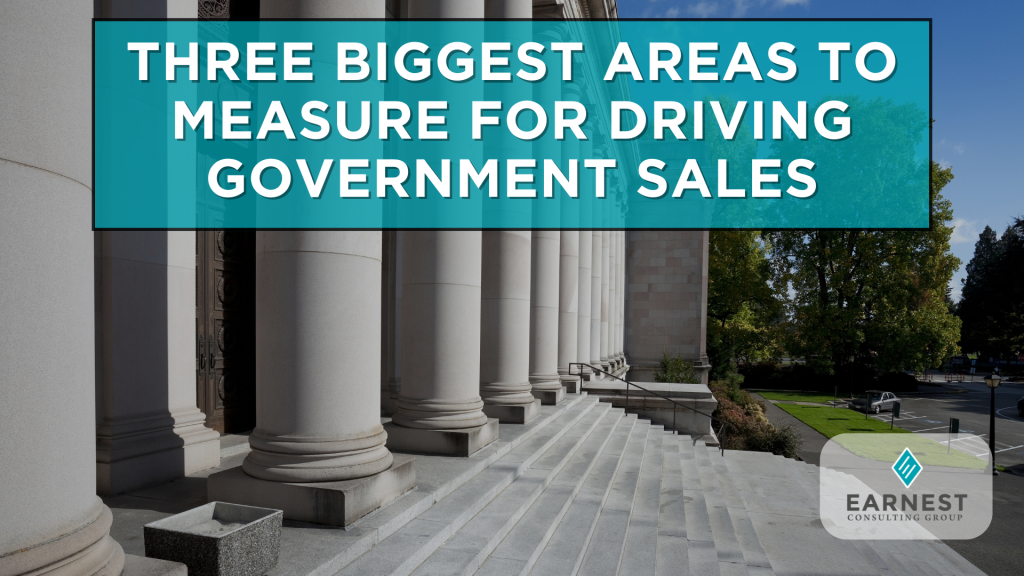Three Biggest Areas To Measure For Driving Government Sales
January 21, 2025 | Government
As government contractors, tracking the right metrics can make the difference between growth and stagnation. If you’re not measuring the right things, you might be missing key opportunities or spending too much time on activities that don’t move the needle.
Here are the three biggest areas you should be measuring to drive government sales success:
- What Metrics Do You Use to Communicate Your Value to Prospects?
Understanding how you communicate your value to government buyers is crucial. Your past performance, differentiators, and proof points should be backed by clear, quantifiable data. Whether it’s contract value, cost savings, operational efficiencies, or past agency experience, these metrics need to resonate with your audience.
If you can’t communicate your value in numbers that matter to your prospects, you’re just another contractor making noise. Consider using metrics such as:
- Units sold: Showcase the volume of products delivered to agencies to demonstrate your capability and reliability.
- Number of customers served: Highlight the reach and impact of your solutions across different government departments.
- Users supported on software solutions: Emphasize how many users rely on your software to illustrate scalability and adoption.
By presenting data-driven proof points, you’ll build trust and differentiate yourself in a crowded market.
- How Many Opportunities Do You Need in Your Pipeline to Meet Your Revenue Goals?
Revenue goals are important, but they remain out of reach without a solid pipeline strategy. You should have a clear understanding of how many bids, proposals, and teaming opportunities you need at various stages to achieve your financial targets.
Start by breaking down your annual revenue goal and working backward:
- Win rate analysis: If your average win rate is 20%, how many proposals do you need to submit to close the necessary deals?
- Existing contracts: Assess how much business you currently have secured for the year and identify gaps to ensure you’re on track to hit your revenue goals.
- Average contract value: Know the typical value of your deals to ensure your pipeline volume supports your goals.
By reverse-engineering your goals, you can determine how many opportunities you need to pursue and convert to stay on track.
- How Many Prospect Touches Do You Have Today, This Week, This Month, This Quarter?
Success in government sales is about consistent engagement. Prospect touches—whether through phone calls, emails, meetings, or networking events—are critical to maintaining momentum and staying top of mind.
Tracking these interactions helps ensure you’re putting in the necessary effort to develop relationships and capture opportunities. Consider these key areas:
- Frequency: Are you reaching out consistently, or are there gaps in communication?
- Channels: Are you utilizing a mix of phone calls, emails, and face-to-face meetings to engage your prospects?
- Quality of touches: Are your interactions providing value and moving the conversation forward?
Measuring prospect touches helps you stay disciplined and ensures you are continually building meaningful connections that lead to opportunities.
Wrapping Up
By focusing on these three critical areas—communicating value, managing pipeline opportunities, and tracking prospect engagement—you can create a more strategic and measurable approach to government sales. Consistently evaluating these metrics will help you identify areas for improvement, optimize your processes, and ultimately drive greater success.
Moving Forward
This article marks a transition. It will be the last newsletter I post on LinkedIn. Moving forward, all my insights, strategies, and actionable government sales advice will be shared exclusively with my email newsletter audience.
If you’ve found value in my LinkedIn newsletters, I encourage you to continue the journey with me by subscribing here: https://mailchi.mp/betteryourcompany.com/sign-up-for-newsletter.
Looking forward to staying connected and helping you succeed in government sales!
« Back to Blog Home




